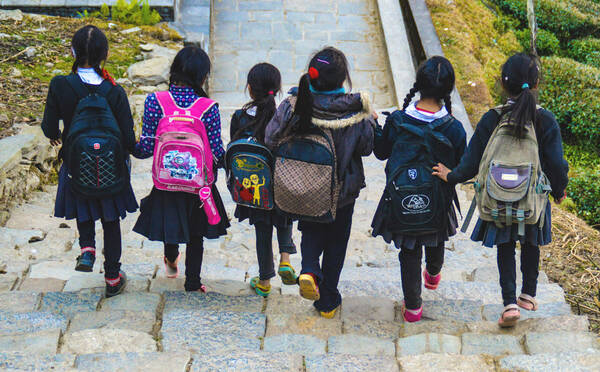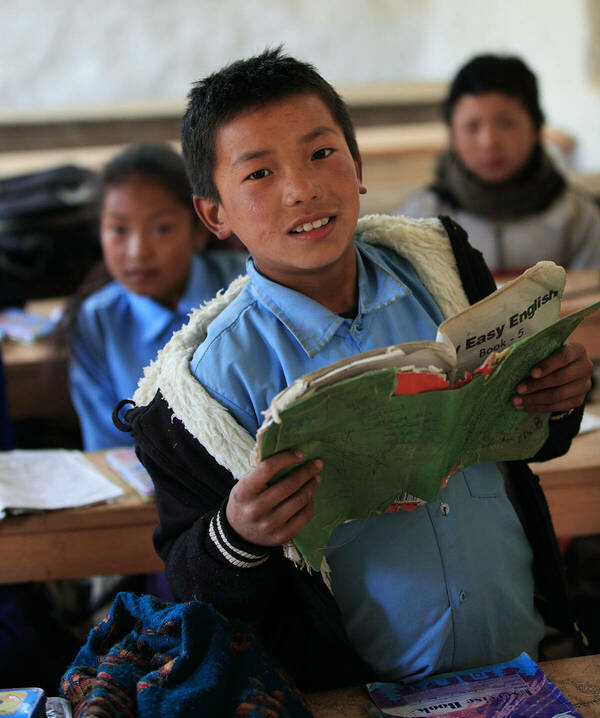
Pulte Institute Evidence and Learning Associate Director Danice Brown Guzmán and her colleague at Notre Dame’s BIG Lab, Teaching Professor Eva Dziadula, are the authors of a recent article in the International Journal of Development and Conflict exploring the nuanced relationship between child labor and school attendance in Nepal, revealing stark disparities influenced by work type and the reporting source.
Guzmán and Dziadula’s findings emerge amid a concerning global uptick in child labor after decreasing for decades, and with millions more at risk due to the impacts of COVID-19, it underscores a critical need for gender-sensitive interventions and policies to address the challenges facing working children. The discrepancy in child labor and school attendance reporting between adults and children — and the gender-specific analysis of child labor and perceived educational benefits — casts a new light on child labor statistics and their implications for global education policies.

An 11-year-old boy reads a school textbook in a classroom in Bhaktapur, Nepal. Credit: Werli Francois/Alamy
In Nepal, children working in markets miss nearly 1.5 more school days weekly than their non-working counterparts. This figure escalates for girls involved in domestic chores by an additional 0.4 days per week, as reported by the children themselves. (Conversely, data from adult household members suggest a less pronounced link between child labor and school absenteeism.)
Employing a randomized survey experiment, Guzmán and Dziadula aimed to gauge adults’ valuation of educational benefits, uncovering a generally lukewarm perception. This skepticism towards education’s value may mean underestimating school absenteeism, particularly for girls. Although child labor is illegal for those under 14 in Nepal, it remains deeply entrenched.
The study found a significant disparity in student and labor engagement across genders, with a higher percentage of boys attending school without working than girls — and a greater portion of girls engaged in domestic tasks alongside schooling. The reasons behind school absenteeism also varied by gender, with boys more likely to skip school due to disinterest and girls for family obligations.
Guzmán and Dziadula’s research also revealed that many working children spend more than 10 hours per week on the job, with a greater burden on older children, those from smaller households, and those in female-headed households.
Guzmán and Dziadula say the knotty relationship between child labor and education accentuates the need for interventions finely tuned to the realities of working children in low- and middle-income countries. By distinguishing between labor types, the research also highlights a heightened risk of educational neglect among children engaged as marketeers compared to those in domestic roles.
One notable finding is that adult male respondents reported a significant reduction in school days for boys engaged in labor, suggesting a gendered perception of the economic value of their work. It also highlights a discernible difference in the perceived educational benefits for boys versus girls, with societal norms and gender roles potentially influencing these views.
Guzmán and Dziadula highlight the complex interplay between child labor and education in Nepal, emphasizing the critical role of gender and societal perceptions in shaping the educational trajectories of working children. They call for targeted, gender-sensitive interventions that address the multifaceted realities of child labor and its impact on education.
Authors' note:
This paper utilizes data collected at the baseline of a randomized controlled trial funded by the U.S. Department of Labor to study the impact of UNICEF's child labor intervention in Nepal. The evaluation was led by Lila Kumar Khatiwada and former Pulte Institute team members Juan Carlos Guzmán and Tushi Baul. Nepal’s National Labor Academy collected the data. Research Assistant Hannah Reynolds supported the literature review.
Full citation:
Dziadula, Eva and Danice Guzmán. "Do Working Children in Nepal Miss More School? Depends Who You Ask.” International Journal of Development and Conflict 13(2023): 159–193
Originally published by at pulte.nd.edu on March 28, 2024.